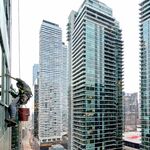crs1026
Superstar
I'm sure the technology is pretty good, but the TTC's short-turning practices really need improvement. Which is to say, dumping full loads of passengers to turn a car simply shouldn't happen.
Turning a car because it is 'late' is a bad decision rule. The rule should look for gaps and turn cars to fill in gaps.
In Thursday's storm, I rode the 192 Rocket home from the Airport. The driver observed that he was an hour behind schedule - not surprising, considering conditions. What mattered is that the busses arrived as regularly as possible. A service where every vehicle is exactly one hour behind, but is moving well, has more passenger capacity than one where every second car is short-turned so that the cars pass the midpointt of the route 'on time'.
- Paul
Turning a car because it is 'late' is a bad decision rule. The rule should look for gaps and turn cars to fill in gaps.
In Thursday's storm, I rode the 192 Rocket home from the Airport. The driver observed that he was an hour behind schedule - not surprising, considering conditions. What mattered is that the busses arrived as regularly as possible. A service where every vehicle is exactly one hour behind, but is moving well, has more passenger capacity than one where every second car is short-turned so that the cars pass the midpointt of the route 'on time'.
- Paul




